Five fire code infractions facility managers need to look out for
Building managers and owners are subject to local fire codes through operational permits and business license inspections. These inspections are typically carried out by local fire marshals and other code officials and inspectors representing the authority having jurisdiction (AHJ).
Fire codes have over fifty different types of operational permit requirements, such as those for facilities that have flammable or combustible materials, high-piled storage, or hazardous materials. Many cities also have business licenses for assembly, lodging, mercantile, and storage occupancies that require annual fire and life safety inspections. But regardless of any local permit or license – or perceived inspection schedule – a fire marshal or fire inspector has the authority to enter any building with just cause.
The International Fire Code (IFC) or NFPA 1: Fire Code are the two model fire codes that are adopted in various forms by state and local governments in the US. These codes have numerous rules on maintaining buildings and fire protection systems, providing mechanisms to enforce the provisions in NFPA 25: Standard for Inspection, Testing and Maintenance of Water-Based Fire Protection Systems and NFPA 13: Standard for the Installation of Sprinkler Systems.
Here are five infractions that are frequently-cited by local inspectors – issues that every building owner or manager should look out for:
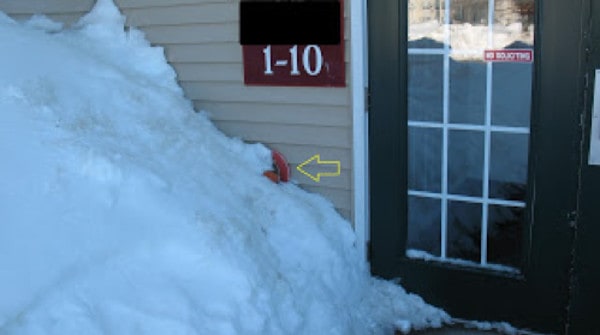
1. Blocked fire department connections and valves
Fire department response must be fast to be effective. And quickly connecting to the fire protection system via the fire department connection (FDC) and rapidly operating exterior valves are critical aspects of response time. Boulders, trees, berms, pallets, vehicles, tractor trailers, and other items in the way of the FDC or other access points are violations of local fire code that increase firefighter injuries, allow fires to increase in size, and slow down the rescue of occupants.
Maintain a clear path from the point where the fire department will stage operations to the fire hydrants, the valves (post- and wall-valves), and the FDC:
From the 2018 Edition of International Fire Code (IFC)
912.2 Location. With respect to hydrants, driveways, buildings and landscaping, fire department connections shall be so located that fire apparatus and hose connected to supply the system will not obstruct access to the buildings for other fire apparatus. The location of fire department connections shall be approved by the fire code official.
912.4 Access. Immediate access to fire department connections shall be maintained at all times and without obstruction by fences, bushes, trees, walls or any other fixed or moveable object. Access to fire department connections shall be approved by the fire code official.
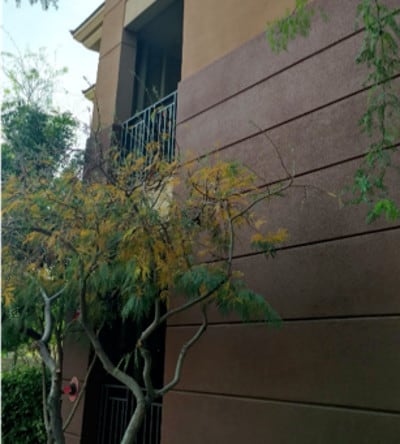
2. Improper storage in the fire pump and riser rooms
Fire pump and riser rooms are dedicated spaces for fire protection equipment. Storage of non-fire-protection equipment such as file cabinets, shelving, buckets, and cleaning supplies is not permitted under codes and standards. These extra items not only clutter the room, they often prohibit or slow down accessing valves during an emergency. When fire protection equipment such as a fire pump is in operation, the room must be occupied by emergency personnel that need the space to work.
From the 2018 Edition of International Fire Code (IFC)
509.2 Equipment access. Approved access shall be provided and maintained for all fire protection equipment to permit immediate safe operation and maintenance of such equipment. Storage, trash and other materials or objects shall not be placed or kept in such a manner that would prevent such equipment from being readily accessible.
901.4.6 Pump and riser room size. Where provided, fire pump rooms and automatic sprinkler system riser rooms shall be designed with adequate space for all equipment necessary for the installation, as defined by the manufacturer, with sufficient working space around the stationary equipment. Clearances around equipment to elements of permanent construction, including other installed equipment and appliances, shall be sufficient to allow inspection, service, repair or replacement without removing such elements of permanent construction or disabling the function of a required fire-resistance-rated assembly. Fire pump and automatic sprinkler system riser rooms shall be provided with doors and unobstructed passageways large enough to allow removal of the largest piece of equipment.
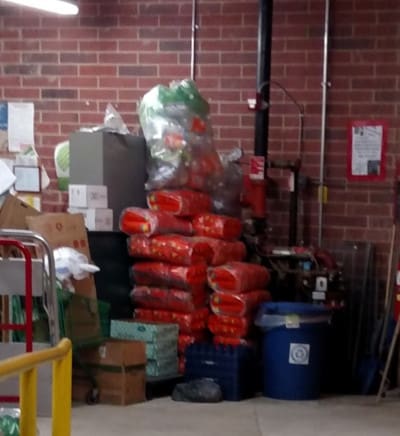
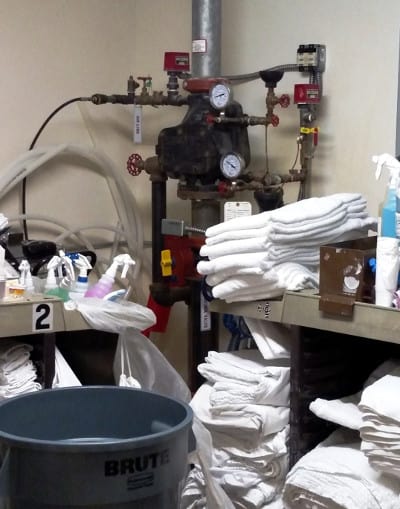
3. An incorrect fire sprinkler system
Existing fire sprinkler systems were designed for the hazard or specific storage commodity of the building at the time of construction. When structures are sold and the use of them changes or the type of product (commodity) stored changes, the fire sprinkler system often needs to be updated to accommodate the new hazard.
Real estate sales of existing buildings are not regulated by fire codes and building owners who update their processes or change storage commodities often fail to update their fire protection system. As a result, local code enforcers often are the ones who wind up advising an unsuspecting owner of the necessary upgrades.
“Proper knowledge of NFPA 13 [which covers installation] is as essential as NFPA 25 [which governs inspection] for anyone responsible for these systems,” said Rick Boisvert, Fire Marshal of the Brighton (MI) Area Fire Authority.
That said, NFPA 25 does advise owners that they need to make these changes in Section 4.1.6.
From the 2018 Edition of International Fire Code (IFC)
901.4 Installation. Fire protection systems shall be maintained in accordance with the original installation standards for that system. Required systems shall be extended, altered or augmented as necessary to maintain and continue protection where the building is altered, remodeled or added to. Alterations to fire protection systems shall be done in accordance with applicable standards.
From the 2017 Edition of NFPA 25
4.1.6* Changes in Occupancy, Use, Process, or Materials. The property owner or designated representative shall not make changes in the occupancy, the use or process, or the materials used or stored in the building without evaluation of the fire protection system(s) for its capability to protect the new occupancy, use, or materials.
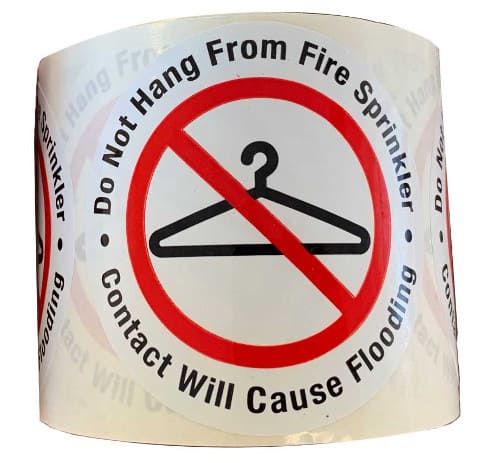
4. Hanging items from fire sprinklers and piping
You may have noticed a sticker below the sprinklers in a hotel room that prohibits hanging any item. This stems from hotel occupants using the sprinkler as a convenient hanger for clothing, especially things like long coats and wedding dresses. Many a bride-to-be or business professional has accidentally activated sprinklers, causing large messes, ruined days, and big expenses.
Specific rules prohibit hanging or supporting anything on exposed sprinkler piping such as signs not related to the sprinkler system, lighting, and even wiring. Lightweight items may seem insignificant but they are simply not a part of the fire protection system – and may cause surprising issues due to chemical incompatibility with plastic piping, electrical shorts, or spurring vibration in the system.
From the 2017 edition of NFPA 25
5.2.2.2 Sprinkler piping shall not be subjected to external loads by materials either resting on the pipe or hung from the pipe.
From the 2016 edition of NPFA 13
9.1.1.8.1* Sprinkler piping or hangers shall not be used to support non-system components.
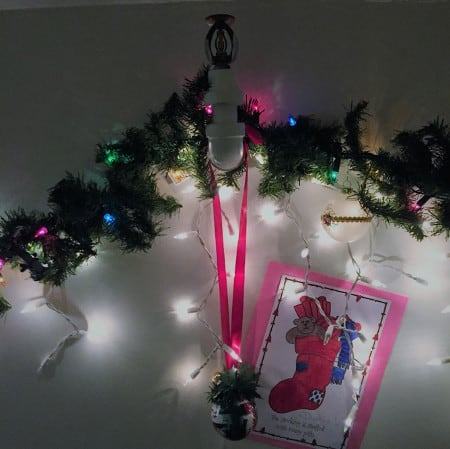
5. Insufficient fire sprinkler clearance
Fire sprinklers throw water from six to ten feet on all sides when they deploy. In order to develop this spray and pattern, the first 18 inches from a pendent or upright sprinkler need to remain clear. And in certain storage occupancies, the first 36 inches are critical for spray and pattern development. The fire code (NFPA 1 and IFC) and fire sprinkler installation standard (NFPA 13) require these clearances to be maintained at all times. Nevertheless, fire inspectors often find storage rooms and high-piled storage areas where personnel have stacked materials within 18 or 36 inches.
From the 2018 Edition of International Fire Code (IFC)
315.3.1 Ceiling clearance. Storage shall be maintained 2 feet (610 mm) or more below the ceiling in nonsprinklered areas of buildings or not less than 18 inches (457 mm) below sprinkler head deflectors in sprinklered areas of buildings.
Exceptions
1. The 2-foot (610 mm) ceiling clearance is not required for storage along walls in nonsprinklered areas of buildings.
2. The 18-inch (457 mm) ceiling clearance is not required for storage along walls in areas of buildings equipped with an automatic sprinkler system in accordance with Section 903.3.1.1, 903.3.1.2 or 903.3.1.3
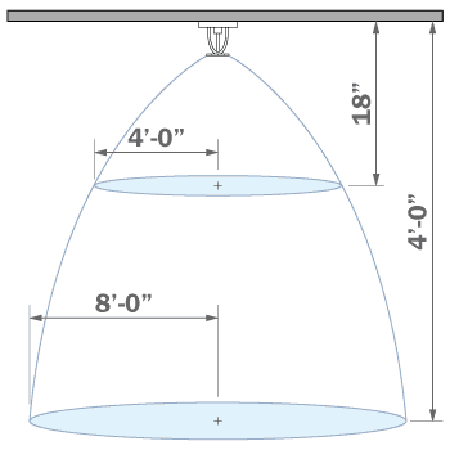
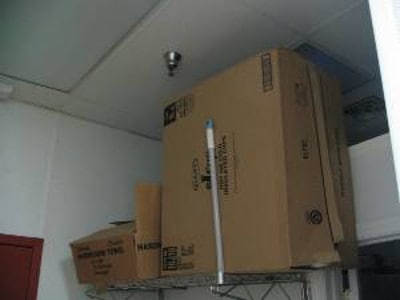
Keep your fire protection system compliant
Staying up to date on these five items can avoid fines and, in some cases, even-costlier repairs. For more information on the top fire safety violations – this time, from the perspective of a national inspection, testing, and maintenance (ITM) contractor – check out our previous series:
The 10 Most Common Fire Safety System Compliance Issues and How to Avoid Them, Part 1
The 10 Most Common Fire Safety System Compliance Issues and How to Avoid Them, Part 2
Need to buy parts for your system? Check out QRFS’ selection of commercial fire sprinkler heads, cover plates, escutcheons, and other parts and tools, or just use the search bar at the top of the page.
If you have any questions about commercial fire safety systems or need help finding a part, give us a call at 888.361.6662, comment below, or fill out our contact form and we’d be happy help.


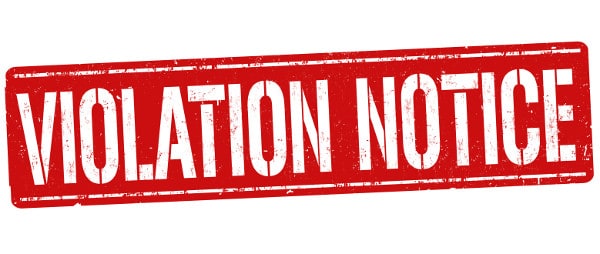
I have a question regarding stacking product outside up against our building
Can a business stack product up against the outside of our building.I had heard a business cannot stack product up against a building as per fire code.
Could you please educate me on this code if it even is one
If you could let me know where I can find that information specifically in the fire code
The reason I’m asking is because we would like to store product outside up against the building and someone mentioned it wasn’t allowed so I just need to find the regulation indicating we can or not
Thank you
Stephen — That may likely depend on where you live, what you are stacking against a building, etc. For code questions like this, we recommend submitting your question through QRFS Ask A Fire Pro. Click the link to submit your question with some information about your building or system, and a fire protection professional will provide a detailed answer based on standards and codes. Our pros include AHJs, contractors, engineers, and code experts with 150+ years of combined experience!
I just needed to ask if sprinklers are necessary in a 1700 sqft space that has 3 fire extinguishers (3/2019 and 3/2018 dates). We are opening up a small baked goods place in the state of Ohio in a spot that used to be a TMobile. Apparently, the fire extinguishers were all the phone company needed. Thanks.
Jaxsons — many small business (mercantile) occupancies don’t need sprinklers, but the addition of cooking equipment and different (possibly) flammable contents might change requirements. If you’d like like to provide more info and have one of our code experts take a look, you can visit our Ask a Fire Pro page (and select the less expensive option for a question like this). Click the link to submit your question with some information about your building, and a fire protection professional will provide an answer based on best practices, standards, and codes. Our pros include AHJs, contractors, engineers, and code experts with 150+ years of combined experience!
Decorating the door with Christmas paper a violation?
Christopher — It depends on where it is and how much paper. Schools, for example, have restrictions on how much paper decoration can be on walls, a proportion that changes in the presence of sprinkler systems.
Are wrapping pictures (for christmas) a violation of a fire code?
Carlie — Unfortunately, your question doesn’t include enough info for us to provide an accurate answer. For example, there are certainly fire code violations for placing flammable decorations on walls in educational facilities if they cover a certain percentage of wall space. And storing wrapping “paper” in large quantities could be a code violation in certain settings. But we don’t quite understand what you mean by “wrapping pictures” or in what context it’s done. We’d suggest contacting your local fire officials. Thanks for reading!
Our complex had been told no unit door decorations (exterior-side, that opens to the corridor). There are people with all kinds of wreaths and large hangings on their doors, and the board and property manager don’t care. I would like to remind them we aren’t supposed to, but nobody seems to know the reason any more. What is the relevant code pertaining to this for CT? I don’t want to ask the fire marshal, b/c I want to give our complex a chance to take care of this, and they retaliate if you complain, so if I can know the pertinent code it can help take away the doubt and lack of concern.
RM — Your best bet is to contact your fire marshal, describe your building (occupancy type and size, residents, etc.), and ask them what local or state code applies. We would have to gather more information to assess the situation. Thanks for reading.
I was at Ireland’s 32 last night. A blond lady calling herself the manager stated we could not sit on our stools at the high tables close to the dance floor, it was against fire regulations. We were not blocking egress or ingress. While at the same time, this small bar had over 75 individuals in it and was not regulating for fire laws on that level. I would like to make a formal complaint and get them cited.
What if we mount a TV that can be raised and lowered and the max height is above 18″?
Matt — If you mount a TV that can be adjusted to block a fire sprinkler’s spray pattern, and someone adjusts it like that and leaves it there, it could impede spray pattern and allow a fire to spread. We wouldn’t recommend it, or we recommend limiting the adjustment. Whether an AHJ will call it a code violation is up to the AHJ — but they certainly might. Thanks for reading!
My question is this. I have 4 corridor stairwells where all the riser hydrant caps were stolen. Is this finable if they are not replaced?
Shawn — The short answer is yes; assuming you are talking about occupant-use hose stations or firefighter hose valves, the caps must be in place. See this QRFS blog for full requirements and note these sections from NFPA 25 (2020 edition):
Thanks for reading!
This is not a business, but a large rural foot hills/mountain POA of 500 homes in the SE. We have our own water system. A portion of our system is still on decades old and trouble-prone 3″ pipes. Of course, this also includes 1/3 of our hydrants. It’s my understanding hydrants are code at 6″, so aside from being out-of-code, the system would be prone to underperforming as less water comes out of a 3″ than a 6″ pipe and there is some concern these old pipes could fail in a longer term high-pressure situation, which is a clear danger to the safety of residents (we have several breaks each year not in a stress situation). The board has no plan to remedy this situation and bring the piping to code as they would rather spend the money on expensive new amenities rather than repair old ones (so it is not a financial issue). According to this rural county fire marshall, we are in good shape because much of the rural community only has access to pumper trucks, and we have a hydrant system and would have a pumper truck sent as well. They consider the hydrants operational since when opened to purge/test, water comes out as expected. However, a pumper truck is not a guarantee and could be delayed due to being out elsewhere or storm debris on the road. In addition, we have a history of fraud, with dummy hydrants stuck into the ground but not actually hooked up. This has been remedied, at least. Some residents, myself included, are concerned not only about the safety issue, but the liability issue if our system does not work correctly (such as pipes bursting) during a fire resulting in structural loss and/or injury. I base this concern on the history of fraud, the lackadaisical attitude towards repair/replacement with no plan of remediation, and the fact we are seriously out-of-code. Is it common for communities to have dacades old 3″ pipes in use. I don’t want to harp on the subject if this is a commonplace situation and not actually an issue, but from my vantage point, it appears to be quite troublesome. One would think, given we are so out-of-code, that there should at least be laws requiring a plan and timeframe for remediation. Please advise.
MJ — Unfortunately, we are not aware of the commonality of 3″ pipe. We suggest you contact a local fire protection professional who works with/designs water-based fire protection systems; they may have a better grasp on this issue. Thanks for reading.
Does gravel and mouse poop on the floor in riser room fall under the improper storage use code?
Kylee — you might suppose those items could be considered “trash.” But the intent of the code is clear and easy access to the relevant equipment. “Storage, trash and other materials or objects shall not be placed or kept in such a manner that would prevent such equipment from being readily accessible.” If the gravel is in bags, it’s certainly “storage.” If it’s scattered on the floor and someone might slip on it or otherwise have trouble accessing the equipment, maybe. And mouse poop, well, that’s just gross, regardless of the code implications. Hope that helps!
Our condo complex has a fire alarm system (SK 5808). They are multi-story buildings with several residential units in each. The alarm system is set up that when the alarms go off, the fire department (FD) receives notice. Our fire chief was at our complex, as there are some problems with our alarm system they wanted to see. Our board president asked if it is required to maintain a line to the FD. The fire marshal and fire chief said they didn’t think it is required. (The FC is not all that knowledgeable about this, and the FM I’m not so sure about.) But so my question is, is that true that a fire alarm system that a residential complex is required to have, but not required it be tied to the FD? or monitoring company? We don’t have a security company monitoring anything, just a landline tied to the FD – that is not required? I’m now very worried about a fire starting at night, and nobody will know and even when they run out might not call 911 until later….scared. If the FC and FM are wrong, and it is required, who would inform them?
Janice — The answer to this question requires some code interpretation based on more information about your building, as the rules for fire alarm systems and whether they need supervision can be complex. We offer an Ask a Fire Pro service where we can look into the situation after getting more info; try it out if you’d like a more thorough answer. Otherwise, broadly, whether a system needs supervision involves the occupancy type and whether a fire alarm system and supervision are required for it, and the potential types of supervision; for example, whether someone onsite continually monitors it, a third party does, or a signal is sent to the fire department. You can learn a bit more about that here. Otherwise, we suggest you contact a local fire pro or you can try our Ask a Fire Pro service. Thanks!
thank you!
Do sprinklers need to have signs or some sort of communication informing people not hang things on them to avoid liability? Or are tenants and hotel guests just supposed to know all of the city codes and we assume this is common knowledge? If a tenant or hotel guest hangs something on the sprinkler because it is not noted in a contract or visible sign stating otherwise, are they liable for damages?
Joy —
Your questions about liability are great ones but best answered by a lawyer. System standards, etc. have rules saying not to hang anything but don’t address issues like legal liability when a third-party does it. However, many places (particularly hotels) do have those signs (like these). Thanks for commenting!
Can you tell me what the possible consequences are for failing to meet fire sprinkler system requirements in California for residential construction, and what the authority is for those consequences? This is for a hypothetical where the sprinkler system is installed and would operate, but is technically not up to code.
Stuart — Unfortunately, we do not know of specific CA-wide codes for residential sprinkler maintenance. Assuming the sprinklers are in a one- or two-family dwelling or manufactured home, the national guide would be NFPA 13D, which essentially has few upkeep requirements. If it’s a larger residential building, NFPA 13R or NFPA 13 might apply.
The lack of upkeep mandated by NFPA 13D has apparently caused some problems reported in some states, as sprinkler systems get very old. However, other reports have found home systems do very well and last decades without much maintenance.
All that said, different municipalities have different regulations regarding sprinkler systems, so your best course of action is to speak with a local authority having jurisdiction (e.g., fire marshal) or a local fire sprinkler pro. They will be able to give you a better answer. The Office of the State Fire Marshal might be a good place to start. Thanks for reading.